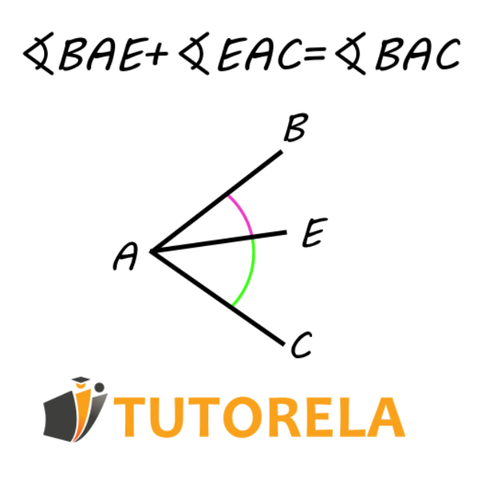We can add angles and get the result of their sum, and we can also subtract them to find the difference between them.
Even if the angles don't have any numbers, we'll learn how to represent their sum or difference and arrive at the correct result.
Sum and Difference of Angles Practice Problems & Worksheets
Master angle addition and subtraction with step-by-step practice problems. Learn to find unknown angles using common vertex relationships and triangle properties.
- Calculate angle sums when angles share a common vertex
- Find missing angles by subtracting known angles from larger angles
- Apply angle relationships in triangles to solve for unknown values
- Work with parallel lines and corresponding angle properties
- Solve multi-step problems involving angle addition and subtraction
- Master proper angle notation and naming conventions
Understanding Sum and Difference of Angles
Sum and Difference of Angles
Angle Sum
To find the sum of angles, they must have a common vertex.
Difference Between Angles
Just as we have added angles, we can also subtract one from another.
We can say that:

Practice Sum and Difference of Angles
Find the measure of the angle \( \alpha \)
Examples with solutions for Sum and Difference of Angles
What type of angle is ?
Remember that an acute angle is smaller than 90 degrees, an obtuse angle is larger than 90 degrees, and a straight angle equals 180 degrees.
Since the lines are perpendicular to each other, the marked angles are right angles each equal to 90 degrees.
Answer:
Straight
Which angle is greater?
The angle in diagram (a) is more acute, meaning it is smaller:
Conversely, the angle in diagram (b) is more obtuse, making it larger.
Answer:
Indicates which angle is greater
Note that in drawing B, the two lines form a right angle, which is an angle of 90 degrees:
While the angle in drawing A is greater than 90 degrees:
Therefore, the angle in drawing A is larger.
Answer:
Indicates which angle is greater
Answer B is correct because the more closed the angle is, the more acute it is (less than 90 degrees), meaning it's smaller.
The more open the angle is, the more obtuse it is (greater than 90 degrees), meaning it's larger.
Answer:
Which angle is greatest?
In drawing A, we can see that the angle is more closed:
While in drawing B, the angle is more open:
In other words, in diagram (a) the angle is more acute, while in diagram (b) the angle is more obtuse.
Remember that the more obtuse an angle is, the larger it is.
Therefore, the larger of the two angles appears in diagram (b).
Answer: